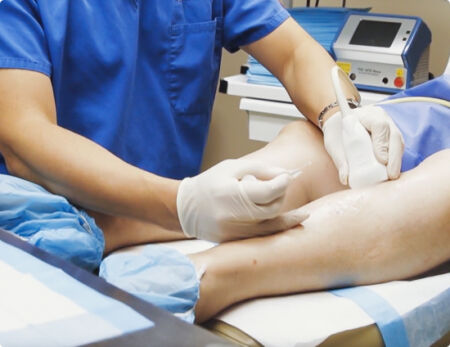
Varicose veins, those bulging, twisting networks that often appear on the lower leg, are a relatively common condition for both men and women in the middle years of life. Risk factors for varicose veins include heredity, weight gain and prolonged periods of standing or sitting in the same position. Some occupations that require long periods on your feet can increase your chances for developing varicose veins as well.
Some studies have shown that what you do during the day may pose a greater risk for varicose veins than your gender or your family history for the condition. Occupations where varicose vein risk may be highest include:
While this is not an exhaustive list, it does involve many of the primary occupations where long periods of standing are typical throughout the work day. The good news is that if you are in a high-risk occupation, there are some steps you can take to counter that risk factor somewhat.
Varicose veins form when the tiny valves inside the veins wear out or become damaged. These valves are usually responsible for moving blood in a single direction back to the heart. That job becomes much harder in the lower extremities, where the veins have to work against the natural forces of gravity to pump blood upward. When other factors contribute to valve damage, varicose veins become that much more likely to appear.
For those who are concerned about varicose veins because of their chosen occupation, there are pro-active steps you can take to negate those risks – at least in part. Preventative measures might include:
Maintain a healthy weight, to alleviate pressure on the veins in the lower extremities
Exercise regularly, since flexing the calf muscle helps to move blood back up the veins
Elevate your feet in the evening to make blood flow back up to the heart easier
Avoid sitting or standing for long periods, find ways to change your position periodically
If varicose veins do develop, there are many effective ways for treating these diseased veins today. Dr. Carabasi offers a number of treatment options in his Pennsylvania office, including sclerotherapy, pharma-mechanical ablation, and radiofrequency ablation. Most procedures are performed on an outpatient basis and involve little or no discomfort or downtime afterward.
To learn more about varicose vein prevention or treatment options for varicose veins, contact Center for Vein Restoration to schedule your personal consultation with Dr. Carabasi.